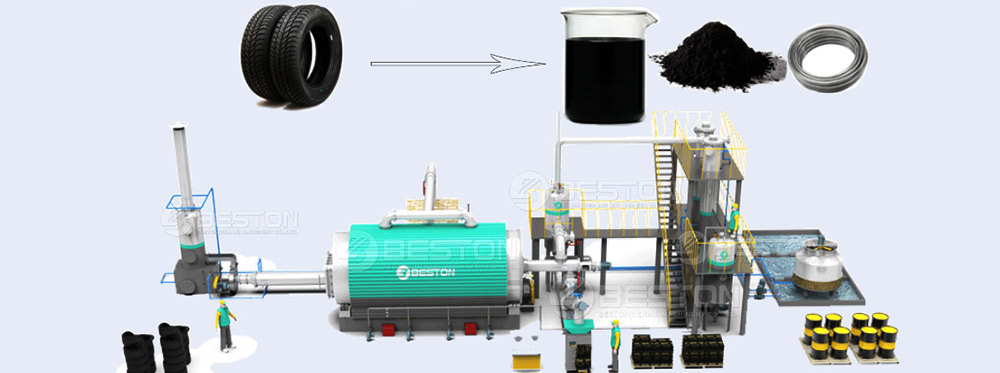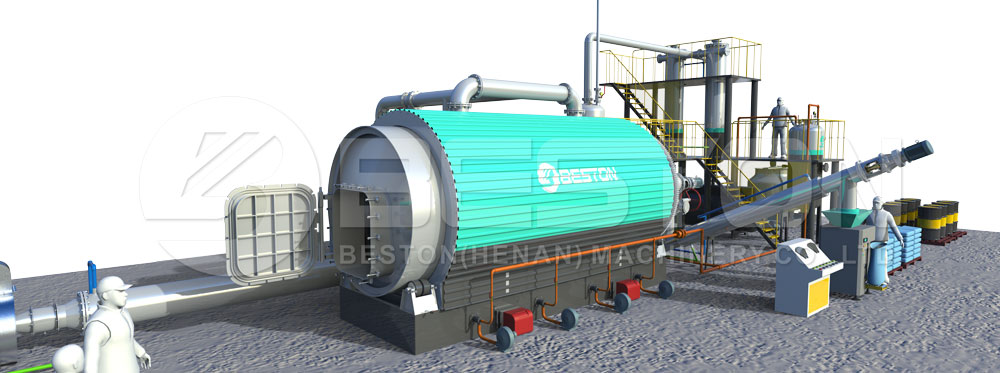Tyre pyrolysis plants have gained significant attention in recent years due to their potential for converting waste tyres into valuable resources, such as fuel oil, carbon black, and steel wire. This article explores the investment returns and market outlook of tyre pyrolysis plants.
Investment Returns of Tyre Pyrolysis Plants
Tyre pyrolysis plant offers attractive investment returns due to their ability to generate multiple revenue streams from waste tyres. The primary product obtained from the pyrolysis process is fuel oil, which has a wide range of applications in industries such as power generation, heating, and transportation. Carbon black, a byproduct of the process, can be used as a raw material in the manufacturing of tires, rubber products, and plastics. Steel wire recovered from the tyres can be sold as a scrap material.
The profitability of a tyre pyrolysis plant depends on several factors, including the plant’s capacity, operational efficiency, and the market demand for the end products. Initial investment costs, such as the plant setup, machinery, and regulatory compliance, also need to be considered. However, with proper planning and management, tyre pyrolysis plants can generate substantial returns on investment, particularly in regions with a high volume of waste tyres and favorable market conditions for the end products.

Current Market Trends
The market for tyre pyrolysis products has been witnessing steady growth in recent years. The increasing concern for environmental sustainability and the rising demand for alternative energy sources have contributed to the market’s expansion. The fuel oil produced from tyre to oil plant is considered a cleaner alternative to traditional fossil fuels, making it attractive to industries aiming to reduce their carbon footprint.
Furthermore, the demand for carbon black has been steadily increasing, driven by the growing automotive and construction sectors. Carbon black is a key ingredient in tyre manufacturing due to its ability to enhance tire durability and performance. As a result, tyre pyrolysis plants have a reliable market for their carbon black output.
Governments and regulatory bodies in many countries are also taking measures to promote the recycling of waste tyres, creating favorable market conditions for tyre pyrolysis plants. Financial incentives, tax benefits, and stricter regulations on waste tyre disposal are encouraging investments in tyre pyrolysis technology.

Future Prospects
The future prospects of the tyre recycling machine appear promising. As the global population continues to grow, so does the demand for energy and resources. Tyre pyrolysis plants offer a sustainable solution to address the increasing problem of waste tyre disposal while simultaneously providing valuable products. The growing emphasis on circular economy principles and the need to reduce carbon emissions are expected to drive the adoption of tyre pyrolysis technology further.
Innovations in tyre pyrolysis technology, such as improved reactor designs, enhanced process efficiency, and the development of advanced catalysts, are also expected to boost the industry’s growth. These advancements can increase the yield of high-quality end products and improve the overall profitability of tyre pyrolysis plants.
Furthermore, international collaborations and partnerships are likely to play a significant role in expanding the market for tyre pyrolysis products. Knowledge sharing, technological advancements, and access to diverse markets can accelerate the growth and adoption of this environmentally friendly technology.
If you want to learn more information, you can see Beston Group.